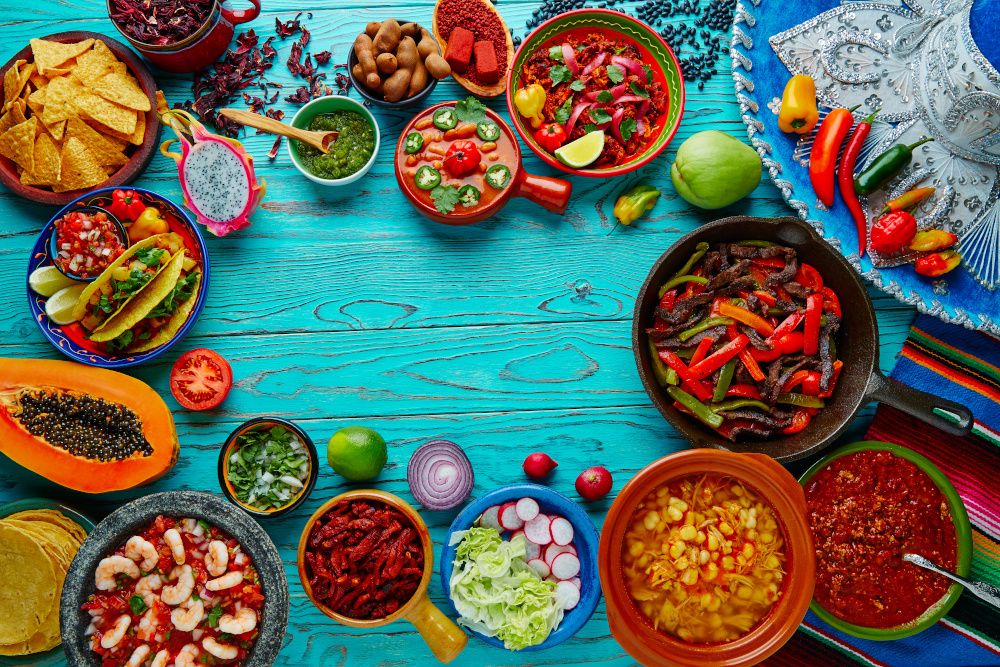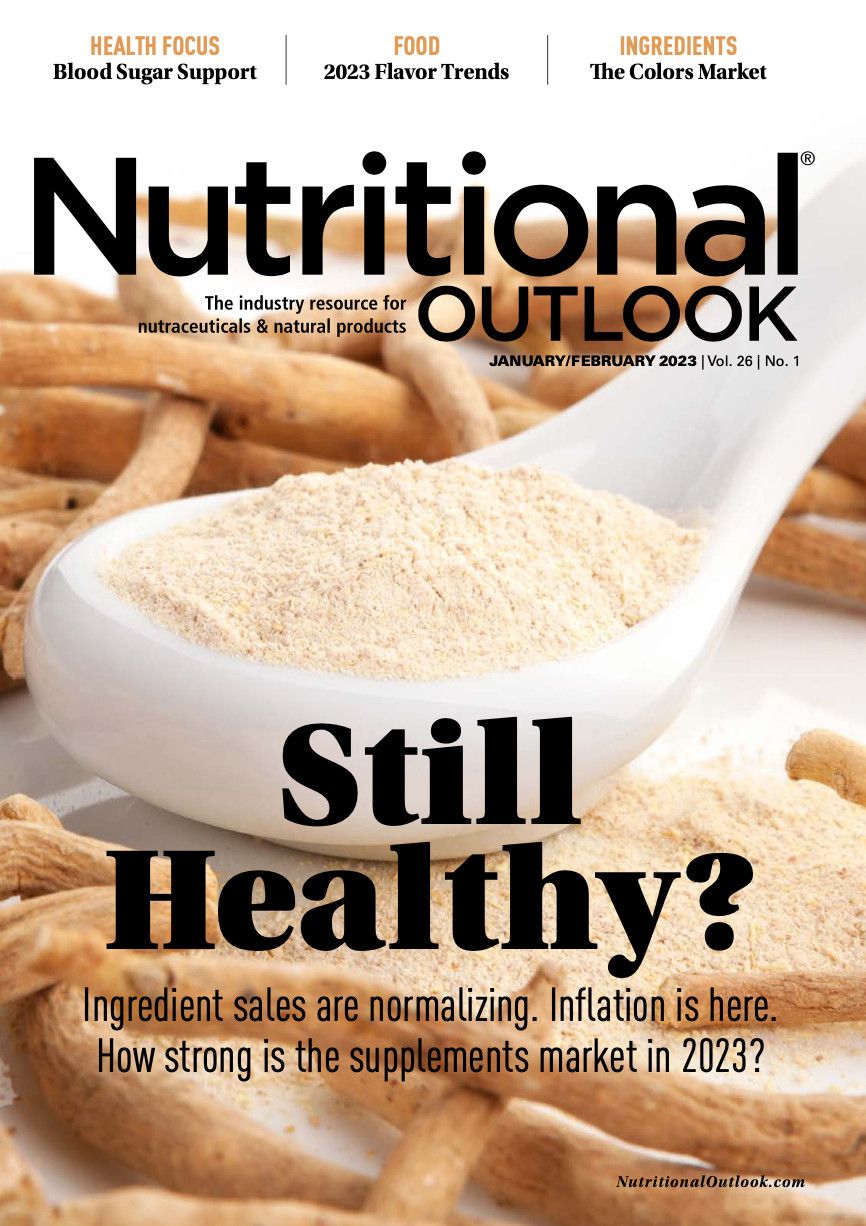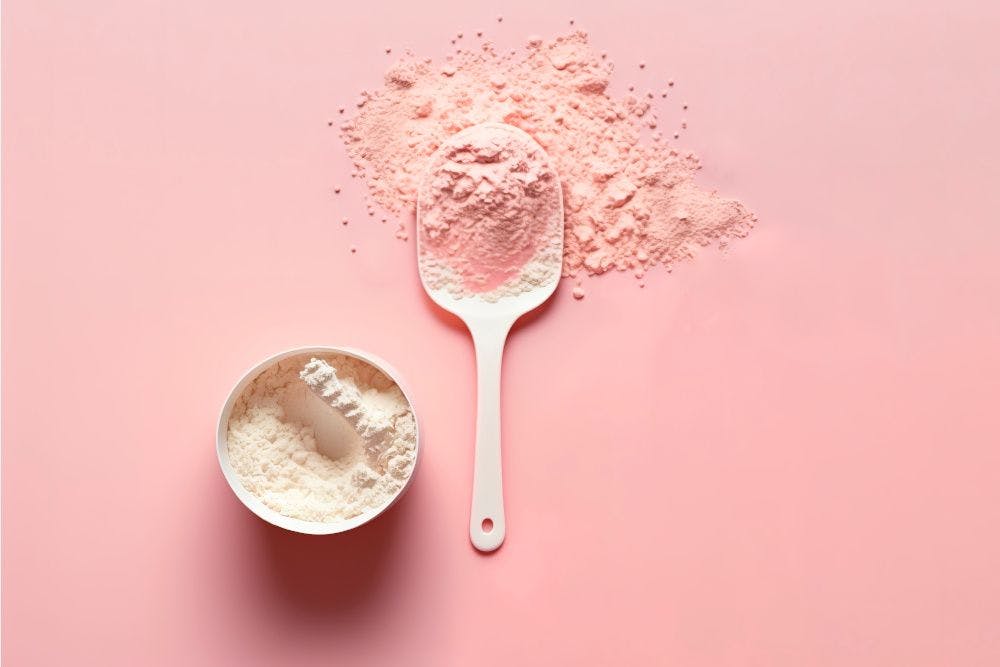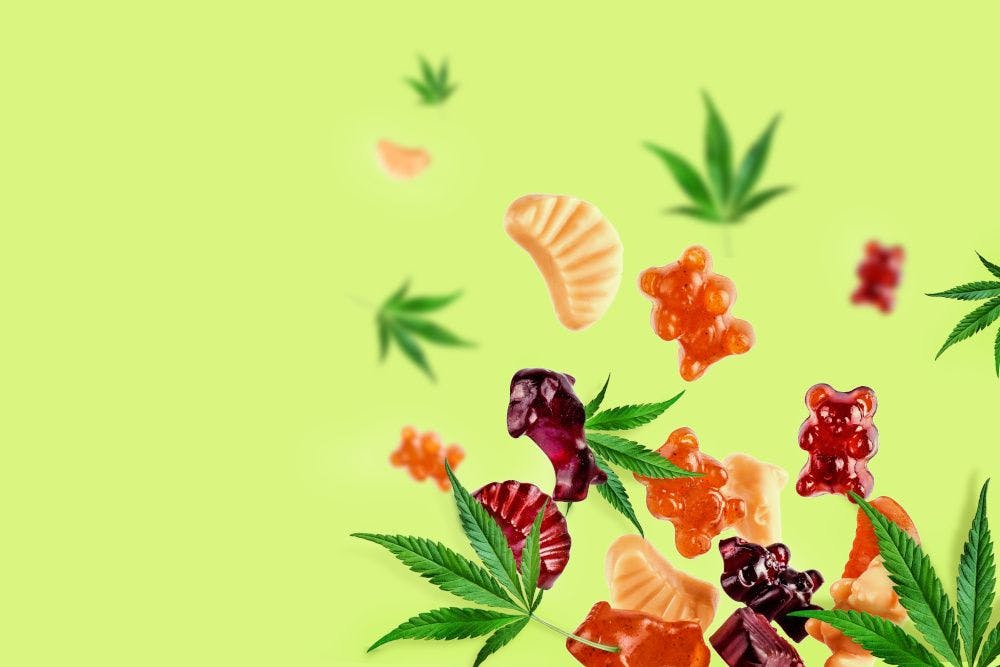Adventure is back on the menu as people travel to new places and embrace unfamiliar cuisines. According to experts, food and drink shoppers will continue their love affair with international flavors and unexpected blends in 2023. At the same time, a subset of consumers is still drawn to the comfort of classic, nostalgic, mood-boosting tastes as well as flavors strongly linked to health and wellness. Here, we take a look at the numerous flavor trends commanding food and drink shelves in 2023.
Big and Bold
Boldness is the name of the flavor game this year. “2023 is set to be a year for people to march to the beat of their own drum,” says Jennifer Zhou, global director of product marketing, flavors, ADM (Chicago). “Consumers are actively making purchasing decisions that loudly reflect their own identities.” This includes which flavors they choose. “The increased need for experiential flavors in functional applications and a heightened focus on bold experiences are supporting this need for self-expression,” Zhou says.
These shoppers want products and flavors with punch, she adds. For instance, “This new wave of self-expression is bringing forth unique flavors coupled with saturated shades. Deep, vibrant pink—think ‘Barbiecore’—is a trending shade, which we’ll see paired with pink grapefruit, dragon fruit, and fruit punch flavors. This also ties in with Pantone’s Color of the Year, Viva Magenta, which is described by Pantone as encouraging ‘experimentation and self-expression without restraint.’”
In addition to pink and magenta inspirations, flavors like blue raspberry and tangerine are “serving dual purposes of masking off-notes from functional ingredients and providing a pleasurable, bold impact,” she adds.
International Inspiration
Global flavors continue to intrigue. “Even with individuals traveling again, consumers still crave exciting tastes and textures from around the world,” says Amy Marks-McGee, founder of Trendincite LLC.
Jen Lyons, marketing manager at Sensient Flavors & Extracts (Hoffman Estates, IL), notes the draw of flavors that transport consumers “to another time or place.” She adds: “With the uncertain economy and inflation on the rise, consumers are looking for an escape, and they are willing to push the envelope and try new cuisines. We expect Korean, Indian, Mexican, Peruvian, and Ethiopian flavors to continue to appeal to consumers, with fusions between the cuisines continuing to trend—e.g., Mexican/Korean, Thai/Italian, etc.”
Mexican and Asian flavors are especially popular. “Mexican and Asian ingredients and flavors continue to trend,” says Marks-McGee. “I expect to see more Mexican-inspired flavors, such as elote (Mexican street corn), tamarind, and mezcal, and Asian-inspired flavors, such as mochi, shaved ice, pandan, and shochu, to trend in 2023.”
Flavorchem’s (Downers Grove, IL) 2023 Flavor & Trend Forecast reports that “Authentic flavors and ingredients from Latin America will shift to the spotlight as consumers show greater interest in culinary exploration and regional diversity.” This includes flavors inspired by beverages (horchata, tepache, and aguas frescas); dessert flavors like tres leches, dulce de leche, and churro; and birria, a traditional Mexican stew.
Ray Hartman, director of flavor development and innovation at Prinova (Carol Stream, IL), mentions another Mexican dessert flavor his company sees trending. “Inspired by paletas, a popular and flavorful Mexican dessert, we predict mangonada will pop in the coming year. Mangonada is refreshing and bold, featuring mango, chamoy, and chili lime spice garnished with candied tamarind. This is the right combo of ‘basic tastes’ of sweet, sour, and salty along with some trigeminal spicy heat,” he says.
Coquito, a sweet drink from Puerto Rico, is another inspiration. “Building off eggnog’s popularity, we think coquito has a chance to gain flavor favor with American consumers,” he says. “This deliciously creamy beverage is coconut based, instead of dairy based, and features a sweet blend of cinnamon and nutmeg flavors to provide a new flavor twist on holiday beverages.”
Desserts from Asia are also a bright spot. “Mochi is a popular Japanese dessert that can now be found in the freezer section of any major grocer. This past year, mochi fusions such as mochi donuts started to trend, opening the door for many new and intriguing mochi flavor combinations to be created,” Hartman says. “We expect this to continue and see mochi-type flavor offerings in new dessert and bakery applications.”
Consumers are also interested in a flavor’s origins. Lyons at Sensient points to spicy notes as an example. “Where we’ll see a shift is the increased demand for traceability,” she predicts. “In the past, consumers just wanted an added kick; now, they want to know the source of the heat. For example, they now want a green jalapeño ranch rather than a spicy ranch.”
Companies are stepping up, and as a result, “We also expect to see demand for chili varietals to expand,” she says. “One particular one we have seen grow in popularity is the aji amarillo pepper often found in Peruvian cuisine.”
Coffee
Coffee will get some notable tweaks in 2023, according to Flavorchem’s 2023 Flavor & Trend Forecast. “Launch activity will center around indulgent flavors like cookie butter, bourbon caramel, chocolate cayenne, ruby cocoa, and brown sugar for everyday enjoyment,” it says.
Escapism
Demand for new flavor experiences also stems from a desire to escape the day-to-day. “When people are fraught with financial woes and health anxieties, food offers an opportunity for ‘delicious escapism,’” says Soumya Nair, global consumer research and insights director at Kerry (Beloit, WI). “While comfort will underpin all food and beverage experience in the upcoming recessionary outlook, there will be desire for ‘mini-escapes,’ wanting to break free.”
Tropical flavors are trending for this reason. “Fruity flavors with fresh notes transform any food into a multisensory experience,” says Michael Falkenberg, head of the global taste business unit at Döehler GmbH (Darmstadt, Germany). “Tropical fruit flavors will be popular in 2023 as their bright shades can inspire feelings of positivity and help to escape from stressful realities. Dragon fruit lychee, guava pomegranate, watermelon, or mango passion fruit will be one of the favorite taste directions, especially in juices and nectars, but are also suitable for applications such as ‘water-plus,’ energy drinks, or spirits.”
Imaginative flavors are also popular, ADM’s Zhou points out. “Flavors that take consumers on a journey or provide a sense of whimsy will trend well in the new year. Pairing with blissful blues, we anticipate that a dreamscape of flavors will pop up in store aisles, including ube purple sweet potato, and birthday cake, as well as flavors emulating fantastical creatures like yetis, unicorns, and fairies. These imaginative profiles could be leveraged for kids’ products to bring life and energy to gummies, vitamins, and supplements, helping increase the acceptability of these functional products and making parents’ lives easier.”
The takeaway? “Brands that lean into the new and unexpected will captivate consumers throughout 2023 and beyond.”
Functional Snacks
For functional snacks, “Brands will need to deliver on taste and function by creating permissibly-indulgent snacks featuring unique, spicy flavor combinations, umami profiles, global seasonings, and retro flavors that appeal to nostalgic consumers,” according to Flavorchem’s 2023 Flavor & Trend Forecast.
Expecting the Unexpected
Spicy and sweet flavors are always popular. Put the two together, and you get surprising combos that are sure to delight.
“While people still reach for the classics, we are seeing increased interest in complex flavor pairings, or dual taste experiences,” says Derek Holthaus, director of innovation and solutions at FlavorSum (Kalamazoo, MI). “This came to life at the Sweets & Snacks Expo this year with a number of launches in the ‘sweet heat’ category, like peach habanero.” He adds, “Adding spicy taste elements to classics will be a compelling way to tap into the 20.5% of consumers interested in complex heat experiences.”
Mango habanero is another example, says Prinova’s Hartman. “Flavor fusions featuring sweet and spicy profiles provide consumers with new taste experiences while still being recognizable,” he says. “Mango habanero taps into two consumer desires: the need for discovery and the curiosity for exotic fruit flavors. The juicy, fruity, and tropical notes from a mango pair perfectly with the fruity and spicy flavors that come from a habanero. This sweet but bold flavor works well in many applications, ranging from confectionery to sauces and even to alcoholic beverages.”
Watermelon chili lime is another spicy/sweet combo. It “combines the coolness of watermelon with the slight spiciness of chili, and bright lime gives a new experience that is sure to excite tastebuds,” says Hartman. Finally, he suggests combining the spicy, savory Korean chili paste gochujang and “buttery” sweet caramel.
Hot honey is another spicy/sweet trend, according to Flavorchem’s 2023 Flavor & Trend Forecast report. “Complex taste profiles featuring honey will experience an upswing in menu and retail innovation as heat meets sweet,” the company predicts. It notes, “Hot honey has grown +53% in consumer interest in the past year and +216% on menus since 2018, indicating the star ingredient’s potential to accelerate future culinary trends.” Other fashionable honey combos include salted honey, maple honey, and honey sriracha.
Sweet-and-spicy blends like pumpkin spice latte and spiced cider also sell well, and demand is no longer just seasonal, says Philip Caputo, marketing and consumer insights manager at Virginia Dare (Brooklyn, NY). “There’s a reason there’s a season for sweet spices—or at least there used to be,” he says. “But the love of everything spiced is bringing about new ways of adding what have historically been fall and winter flavors to applications all year round. Flavors like apple cider chai, cinnamon-citrus peel, cardamom fog, maple-spiced matcha, spiced fig honey, and more are some of the flavor concepts we think can spice up the market.”
“Consumers are seeking achievable adventures and playfulness via unlikely combinations, mashups of familiar food and drinks, fusion cuisines, and unconventional flavor pairings,” says Kerry’s Nair.
She lists some of these notable mashups: “Cheese is a dominant flavor theme—particularly cheese such as cheddar and parmesan—in sweet cookies and biscuits, ice cream, and cakes; strong limes and citrus in dairy and coffee beverages; sweet inclusions and nuts for pizza toppings; soup-inspired burgers; savory flavors beyond tahini (such as black sesame, masala, curry in desserts); alcohol-inspired desserts; and more.”
Limited editions generate excitement, too. Marks-McGee at Trendincite reminds brands about the power of seasonal launches. “Seasonal flavors and limited editions are a way for brands to introduce new products and test consumer appeal. Apricot and cherry blossom are on the radar especially for spring flavors. Cherry, pineapple, and watermelon combinations are popular summer flavors.”
The Power of Social Media
Many flavors and food trends gained superstar status through social media. “Whether it’s feta pasta, avocado ice cream, or another trending taste, chances are you’ve tried—or been made aware of—at least one TikTok viral recipe from 2022,” says Derek Holthaus, director of innovation and solutions at FlavorSum. “The expansion of social-media video offerings like TikTok and Instagram Reels has brought on a new community of food influencers—and many share recipes from their own cultures. We expect to see an increase in global or internationally inspired tastes like ube, yuzu, and more in the new year as a result.”
Soumya Nair, global consumer research and insights director at Kerry, highlights a few of the trends that got their start in social media, including flavor hacking and "Reel"-inspired recipes like cloud bread, “healthy Coke,” “dirty Diet Coke,” “pilk,” and familiar foods with a twist (think: pesto eggs, pasta chips, mini pancake cereal, salmon rice bowls, corn ribs, and feta pasta bake).
“Social media and the emphasis on visual currency have influenced food and beverage trends at a rapid pace,” she adds. “New recipes and over-the-top food and beverage creations dressed up with abundant inclusions and toppings, vibrant glitters, and sprinkles that have an element of familiarity attract consumer curiosity.”
What does this mean for flavors? The saying “Eat with your eyes” has never been truer, she says. “Visually vibrant food and beverages using ingredients such as beets, dragon fruit, matcha, sprinkles, and lustre dust inspire not just beverages and cocktails but also pasta and pies.”
Still Craving Comfort
Then there are consumers seeking classic, comforting, nostalgic flavors. And no wonder.
“In a significantly fast culture, the simplicity of familiar and comfort flavors continues to bring joy to consumers,” says Kerry’s Nair. “While simple flavors thrive in a recessionary environment, nostalgia, comfort, and familiarity drive an everlasting appreciation for simple things.” Think: ice cream sandwiches made with waffles, cookies, stroopwafel, birthday cake, biscoff tiramisu, sweet-infused savory snacks with icing, and dessert-themed cereals, she says.
Caputo at Virginia Dare says, “Flavors like fruity cereal milk, gummy bear, and rainbow sherbet can deliver a sense of happiness and childhood bliss to your customers.” The company offers an entire line of “Forever Young” flavors including classic candy flavors (like gummies and fruit candy), childhood cereals, carnival themes (like candy apple, churros, funnel cake, and cotton candy), lemonade blends (including mint lemonade and tart cherry lemonade), and popular dessert flavors (like Bananas Foster Brûlée, snickerdoodles, and marshmallow chicks). These can pair with everything from performance-nutrition products to beverages, the firm says.
Hartman at Prinova says, “Nostalgic flavors from the 1980s and even 1990s help brands create an emotional connection with consumers. We still see nostalgia continue in popularity, especially among limited-time offerings.” His example: “Retro candy flavors such as sour gummy flavors in an energy drink or even a popular bubble gum flavor in a personal care line, and retro cereals made famous during Saturday morning cartoon commercials.”
Mainstays also remain strong. “The most popular and strongest flavors in the food and beverage industry are still the classic ones such as orange, apple, or lemon, especially for beverages,” says Döehler’s Falkenberg, “whereas for dairy products, chocolate, strawberry, and vanilla remain the favorite taste directions.”
Vanilla is forever. “Vanilla is a year-over-year popular flavor and bodes well for powdered supplements, providing a sense of security for consumers with a trusted and beloved flavor,” says ADM’s Zhou. She adds, “Markedly, 68% of global consumers find nostalgic flavors appealing within the food market, and we expect to see this inspire functional products of all formats.”
Cinnamon brown sugar is another cozy favorite, according to Flavorchem’s trend report. It “adds a comforting taste to snacking favorites such as cookies, ice cream, and sweet baked goods, along with complementing several beverage applications.”
Indulging in sinful sweets is another classic comfort move. Citing “pure indulgence” as an ongoing trend, FlavorSum’s Holthaus says, “Food has an amazing ability to create joyful moments instantly. Innova reports that 6 in 10 consumers say they most commonly treat themselves by creating everyday moments of happiness. And what makes food so enjoyable? Thirty percent of global consumers find richness of flavor (like in a triple-chocolate concept, for instance) the most important driver of enjoyment and pleasure in food (Innova).”
Consumers seeking comfort in the familiar may still enjoy a twist. For instance, “It’s no secret that we think vanilla is one of the best foundational flavors for a shake or other beverage. However, we also think it’s one of the best complementary flavors to add some intrigue and differentiation to your application,” says Caputo. “Elevating a classic flavor like vanilla adds a sophisticated twist. Upgraded examples include vanilla tarragon blackberry, vanilla anise, and vanilla bean white chocolate. How delicious do those sound? Other popular flavors ripe for this trend include chocolate, strawberry, banana, coffee, and more.”
And Hartman adds, “Over the past few years, we have seen many comfort flavors trend as consumers looked to improve their mood through conscious indulgence. Look for this trend to continue, but with an international twist.”
Relaxation and Mood
Flavors can also be comforting by helping consumers de-stress.
“According to Mintel, 42% of U.S. adults like their food/drink to contribute to both their mental and physical health,” says FlavorSum’s Holthaus. “2022 has been another year of uncertainty, with inflation, geopolitical concerns, and lasting impacts of COVID-19. With 84% of Americans feeling stressed weekly, we predict a heightened focus for formulators on products that nourish the mind, body, and soul.”
This is where the market is heading, ADM’s Zhou agrees. Citing “light and calm” as a trend, she says, “Global events have weighed on many consumers, creating a need to find moments of relaxation, as well as ways to shift their mood to more optimistic outlooks and brighter days. Globally, 47% of consumers state that a top barrier to healthy living is the difficulty to find time to relax.”
Soothing flavors and colors are trending. For instance, says Zhou, “Both as a flavor and color, lavender is set up to be a popular option in functional confections given its light hue and delicate flavor profile and aroma.” ADM’s 2023 Flavor and Color Outlook report states that “Many are anticipating the 2023 Color of the Year to be Digital Lavender. This purple will translate into unique products such as bubble teas, ice cream, and functional beverages that pull in notes of floral lavender, nutty purple sweet potato and sweet berry, plum, or grape.”
Another flavor company, Flavorman (Louisville, KY), predicts that “soothing lavender” will be popular in 2023.
Mood-boosters are definitely on the rise, Flavorchem’s 2023 Flavors & Trend Forecast states. “Consumers will strive to make self-care a priority by turning to products that are suggested to improve overall mood and reduce the negative effects of stress on the body.” As a result, “a growing number of food and beverage launches will be positioned for mood and brain health.”
Trendincite’s Marks-McGee agrees. “To stay healthy, consumers have turned to food and beverage as ‘medicine’ and are taking a holistic approach to wellness. From plant-based products to functional ingredients, this trend has manifested itself in many ways. Nootropics for cognitive health are trending with mood-enhancing ingredients such as mushrooms, ashwagandha, and other adaptogens. I’m seeing different teas emerge such as hojicha (roasted Japanese green tea) and yaupon tea (the only wild-grown North American plant that is naturally caffeinated). I expect mental health to be a focus for functional food and beverage.”
Mocktails and Cocktails
Alcohol-free beverages are skyrocketing, and formulators are finding room to play with new flavors.
“Called everything from 'alt drinks' to 'zero-proof cocktails' to 'buzzless spirits,' the burgeoning industry of RTD mocktails is abound with opportunity for new and established beverage brands,” says Philip Caputo, marketing and consumer insights manager at Virginia Dare. The company suggests shaking things up with flavors like blueberry watermelon mint mojito, apricot Bellini, or ginger lime Moscow mule.
“Alcohol-free is on the rise,” agrees Derek Holthaus, director of innovation and solutions at FlavorSum. “According to the 2022 Bacardi Cocktail Trends Report, 58% of global consumers are drinking more non-alcoholic and low-ABV cocktails than a year ago. And product launches are following suit (doubled in the past year). From a flavor perspective, we anticipate the same sweet classic tastes from the alcohol market. Our proprietary research shows that people are most interested in cocktail-inspired flavors like margarita, pina colada, and daiquiri for non-alcoholic exploration.”
Here’s to Health
Wellness flavors as a whole remain key sellers among consumers still prioritizing healthier foods and lifestyles. This movement, which started well before the pandemic, shows no sign of abating.
“We see a continued shift towards proactive support of holistic well-being, with consumers gravitating towards certain flavors that they associate with products that may have functional attributes,” says ADM’s Zhou.
“Health is not secondary to taste anymore,” seconds Kerry’s Nair. “In a relatively post-pandemic world, rising consumer attention to health and diet has driven the need for functional ingredients and balanced nutrition. Flavors that covey a halo of health, from functionally-forward flavors to flavors that subtly imply better health, have greater responsibility.” Trends set to grow well into 2023 include alcohol-free, protein-packed beers; multivitamin-infused candies and cookies; beverages with nootropics and adaptogens such as ashwagandha; probiotics for digestive health; and immune-boosting products, she says.
Citrus is always linked to health and wellness. “We believe developers looking to incorporate holistic health and wellness benefits will explore the linkages between functionality and flavor,” FlavorSum’s Holthaus says. “An example of this is the association between citrus and immunity.”
The continued rise of citrus flavors is notable. “The most prominent pattern experts have noticed is a significant rise in citrus flavors, sweeter spirit-flavored cocktails, and flavors used for ready-to-drink beverages,” says Flavorman in its 2023 Beverage Trend report. “The flavor trend is shifting toward uncomplicated citruses, with growing interest in orange, grapefruit, lime, and other berry blends.”
“Sunny and vibrant oranges and yellow colors paired with zingy citrus, along with other fruits, vegetables, and botanicals, are capturing shoppers’ attentions for their perceived connection to wellness attributes,” Zhou says. “Citrus profiles, including both traditional types, such as oranges, lemons, and limes, and emerging varietals, like finger lime and calamansi, are bursting with opportunity in this space. Market research shows that citrus remains the most classic flavor profile, accounting for nearly 30% of new product launches.”
Döehler’s Falkenberg suggests citrus flavors like calamansi tangerine, yuzu, orange, pomelo, and blood orange for products like carbonated soft drinks, beer, spirits, and confectionery.
Floral and botanical ingredients are also associated with functional benefits. Holthaus says FlavorSum expects demand for these to continue to grow “because they offer elevated taste profiles and added functional benefits.” He adds: “According to social listening platform Tastewise, floral and botanical are up in social discussions by 52% and 17%, respectively. We believe these tastes will continue to penetrate the beverage space as they have in recent history, but earthy notes will expand into other categories in the new year.”
Falkenberg agrees. “Functional extracts and botanicals are trending as floral and botanical flavors are often combined with functional benefits. Sixty-one percent of global consumers are now more conscious of needing to lead a healthy lifestyle. They are mainly used in applications such as smoothies, hot drinks, or functional drinks—but also, ice cream, desserts, snack bars, and cereals are upcoming applications for these flavors.”
In fact, he says, “The floral flavor trend has been on the rise over the last few years, making its mark in the confectionery and beverage categories. In the past two years, floral flavor profiles have grown +91% in consumer interest. We expect to see florals expand in 2023 as consumers open up to experimenting with florals in new dishes and categories, all while bringing growing interest in functional health to the table.”
Earthy ingredients like mushroom are also in demand. “As plant-based offerings become more and more ubiquitous, mushrooms are, too,” Holthaus says. “What Mintel coins as ‘The Great Mushroom Boom’ is a heightened interest from consumers in the earthy ingredient. From snacks and meals to even cocktails (according to Thrillist), whole mushrooms and mushroom flavors are popping up all over the place. We expect to see more mushroom innovation in 2023.”
Ancient grains like barley, spelt, farro, fonio, kamut, sorghum, and teff continue finding new appeal, says Kerry’s Nair. “Age-old practices, ingredients, and recipes are experiencing a revival. Origin stories and lost traditions are finding a new home amid the post-modernization of food, coming full circle to authentic and wholesome experiences.”
Finally, health-conscious shoppers want all-natural, clean-label ingredients they can feel good about eating. “As part of consumers' desire for clean labels, extracts will continue to increase in popularity,” predicts Lyons at Sensient. “Consumers want to experience bold, new flavor experiences, but authenticity is key. They are more discerning about the ingredients on labels and are seeking simple, better-for-you ingredients.”
Brand Collaboration
At Trendincite LLC, Founder Amy Marks-McGee predicts more brand names joining forces to create new product development and marketing opportunities. “Iconic food and beverage brands are partnering on fun collaborations and innovative scented applications inspired by the different flavors in their portfolios. From savory flavors such as burgers and bacon to sweet flavors like donuts and ice cream, I anticipate more unique partnerships on scented beauty and home fragrance products,” she says.
Down-to-Earth
The final big trend is sustainability. “Many consumers are no longer viewing wellness as an individual endeavor; instead, they’re attentive to the well-being of their communities and the planet,” says ADM’s Zhou. “Flavors derived from natural sources—like fruits, vegetables, and botanicals—are helping meet conscientious consumers’ demands as they seek out products with clean labels that have simple, recognizable, and ‘closer-to-nature’ ingredients.”
Upcycling is a growing movement, and Flavorchem predicts that “With growing concern over future food supply, products that highlight sustainable ingredients like kelp, mushrooms, jackfruit, upcycled pulp, and vegetables will drive innovative applications.”
Kerry’s Nair concludes: “The influence of sustainability is extending into consumer decision-making of food and beverage purchases—choice of brands, flavors, ingredients, and retailers. Consumer taste preferences are guided by their sustainability consciousness. Sourcing, provenance, and root-to-tip utilization that supports circular sustainability and offsets food waste will be key.” So don’t forget about those “neglected” vegetables and fruits, which can be upcycled into snacks and jerky, or berries and fruits that can be turned into beverages. There just may be a customer for that.
Opportunities Abound
In 2023, food and drink makers will use flavors to reach a broad audience. The good news is that nothing is off the table; consumers are just as game for sweet, indulgent, comforting flavors as they are for spicy, international flavors and the thrill of adventure. Discover what your customers want, and make sure your flavors are on point. Remember that consumers expect to get the best of all worlds. They want it all, says Nair: “reduced-sugar/sugar-free products with full flavor and mouthfeel, plant-based alternatives that taste like the real deal, alcohol-free beverages with the full flavor and tingling experience, low cost but full flavor, etc.”
As always, formulators should be prepared to deliver. “With technological refinement in taste and texture, consumers expect healthy, nutritious, better-for-you, and sustainable alternatives to deliver on the same taste experience and flavor intensity, if not more, than mainstream food and beverages,” she advises.



























